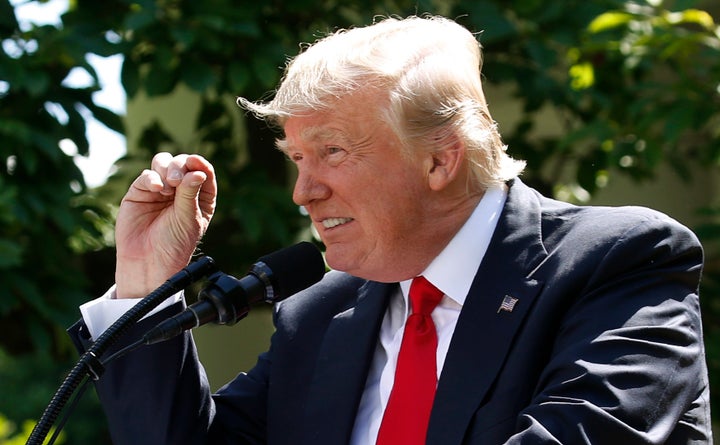
WASHINGTON — The White House managed to put together a 53-page proposal for fixing the nation’s crumbling roads, bridges and airports that completely ignores one of the major threats to that infrastructure: climate change.
The plan, released Monday, includes not a single mention of the words “climate,” “warming,” “resilience” or “disaster.” Instead, it calls for a $1.5 trillion investment in infrastructure and for rolling back numerous key environmental protections that President Donald Trump and his team see as obstacles to economic growth.
The omission is unsurprising coming from an administration that has derailed America’s actions to combat the climate crisis. But it is no less infuriating for progressives and environmentalists.
“The lack of any mention of the need to respond to climate change is just one more example of how unserious the Trump infrastructure ‘plan’ really is,” Raúl Grijalva (D-Ariz.), the ranking member of the House Natural Resources Committee, told HuffPost via email. “You would think they could at least focus on refurbishing roads and bridges in coastal communities so people have the emergency evacuation routes they are going to need, but nope.”
In Twitter post, Peter Gleick, a climate scientist and member of the U.S. National Academy of Science, said that the plan is “by definition, inappropriate, poorly designed, and guaranteed to be focused on building the wrong things, badly.”
In 2017, climate- and weather-related disasters killed more than 360 people and caused a record $306 billion in damage. And the scientific community, including those working under Trump, have warned that climate change will continue to drive extreme weather events, including floods, hurricanes and drought, wreaking havoc on infrastructure.
A September report by the Government Accountability Office noted that extreme weather and fire events have cost the federal government more than $350 billion over last decade. And in a lengthy climate report that the White House signed off on in November, scientists from more than a dozen federal agencies warned about the looming climate-related threat:
[I]t is virtually certain that sea level rise this century and beyond will pose a growing challenge to coastal communities, infrastructure, and ecosystems from increased (permanent) inundation, more frequent and extreme coastal flooding, erosion of coastal landforms, and saltwater intrusion within coastal rivers and aquifers.
In his State of the Union address last month, Trump spoke of extreme weather disasters — “We endured floods and fires and storms,” he said — but failed to link them to climate change.
“We will build gleaming new roads, bridges, highways, railways and waterways all across our land,” he said.
In August, Trump rescinded a rule that requires federal, state and local agencies to account for rising sea levels caused by climate change, and to construct buildings, highways and other infrastructure to withstand flooding. He said at the time that the existing permitting process is “over-regulated,” calling it “a massive self-inflicted wound.”
Days later, Hurricane Harvey slammed into the coast of Texas as a Category 4 storm, dumping at least 9 trillion gallons of rain across the state — enough to fill Utah’s Great Salt Lake twice. The storm triggered catastrophic flooding in and around Houston. Some parts of Texas recorded more than 50 inches of rain, breaking the continental U.S. rainfall record. At least 82 people were killed.
Climate scientists say Harvey was made worse by climate change.
